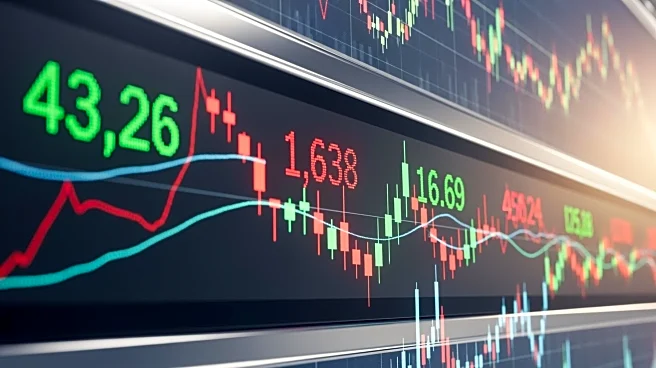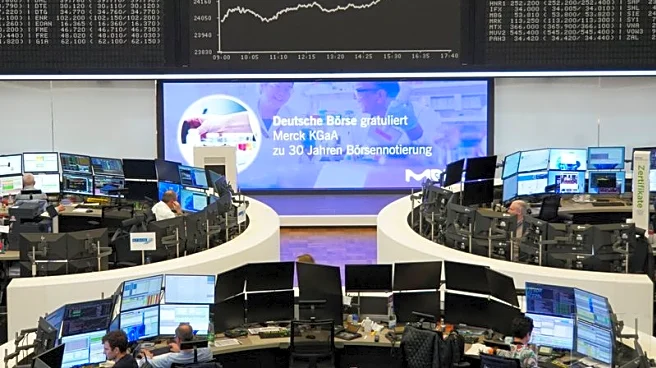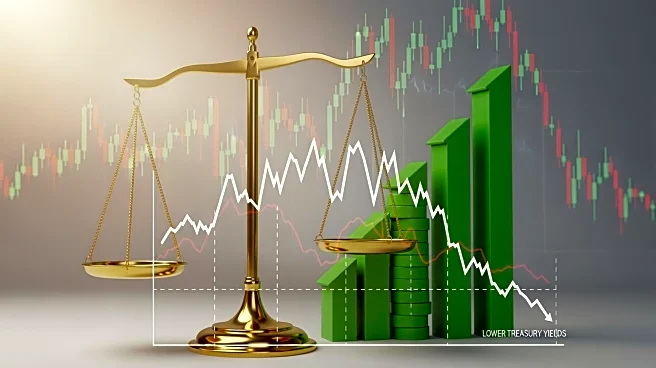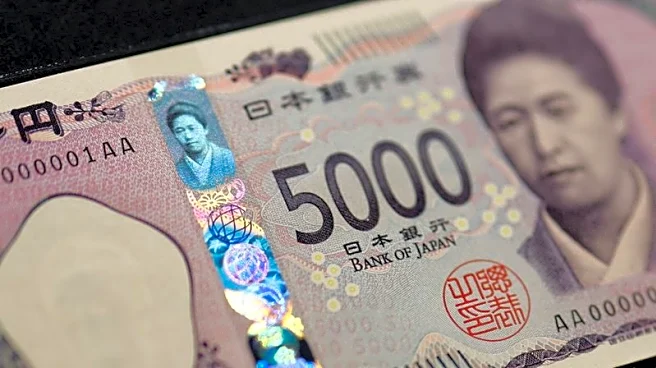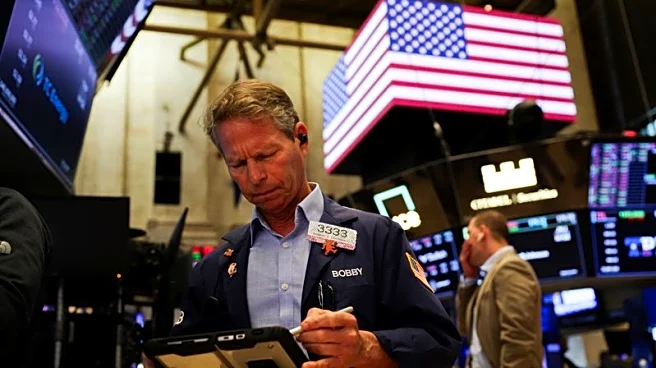What's Happening?
Gold futures experienced a decline as investors opted to book profits ahead of the anticipated U.S. inflation data release. On October 22, 2025, gold futures for December delivery fell by 0.9% to $4,072.10
per ounce. This drop follows a significant rally that had previously pushed gold futures to an intraday record of $4,398 per ounce. The U.S. dollar index rose by 0.2% to a one-week high, making dollar-priced bullion more expensive. The recent decline in gold prices comes after a sharp single-day drop, the largest in five years, as investors prepare for the U.S. Consumer Price Index (CPI) report, which is expected to show core inflation holding at 3.1% in September.
Why It's Important?
The decline in gold prices is significant as it reflects investor sentiment and market reactions to upcoming economic data. Gold, a non-yielding asset, typically benefits in low-interest rate environments. The anticipation of the U.S. Federal Reserve's potential 25-basis-point rate cut next week adds to the market dynamics. The recent price movements in gold also highlight the impact of geopolitical tensions and economic uncertainties on commodity markets. Investors' actions ahead of the CPI report indicate a cautious approach, balancing between profit-taking and potential future gains.
What's Next?
Investors are closely monitoring the upcoming U.S. CPI report and the Federal Reserve's meeting next week, where a rate cut decision is expected. The outcome of these events could influence gold prices further. Additionally, geopolitical developments, such as the potential summit between President Trump and President Putin, and the awaited meeting between President Trump and Chinese President Xi Jinping, could also impact market sentiment and gold prices.
Beyond the Headlines
The current market situation underscores the broader implications of economic indicators on commodity markets. The interplay between inflation data, interest rate expectations, and geopolitical events can lead to significant shifts in investor strategies. The ongoing U.S. government shutdown, which delayed the CPI report, adds another layer of complexity to the economic landscape, affecting investor confidence and market stability.



